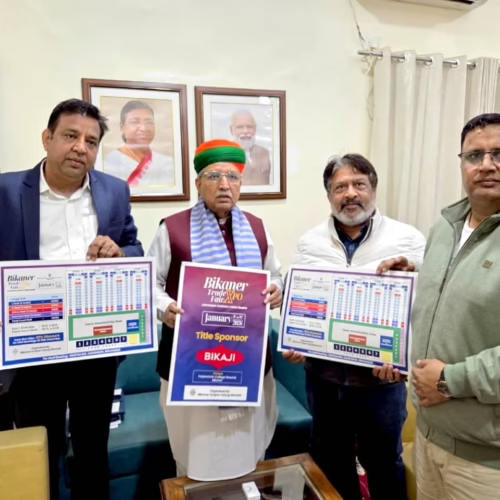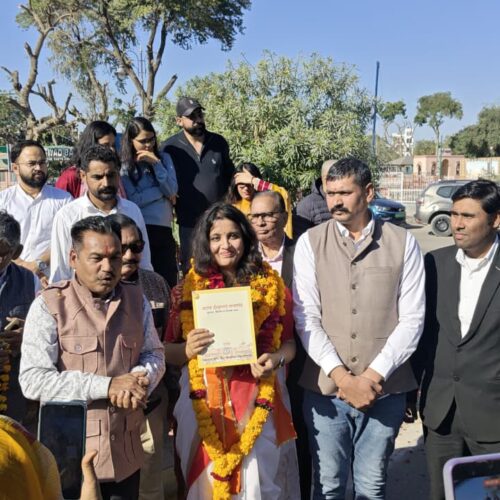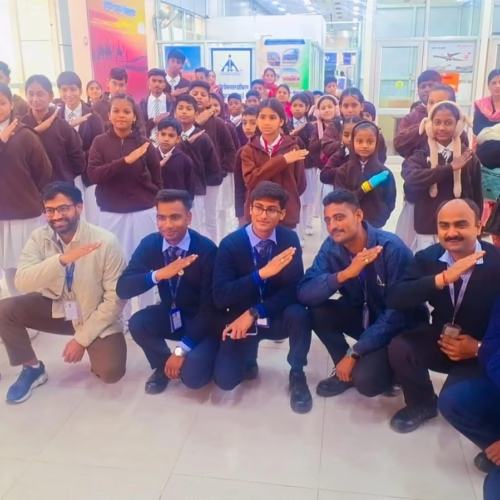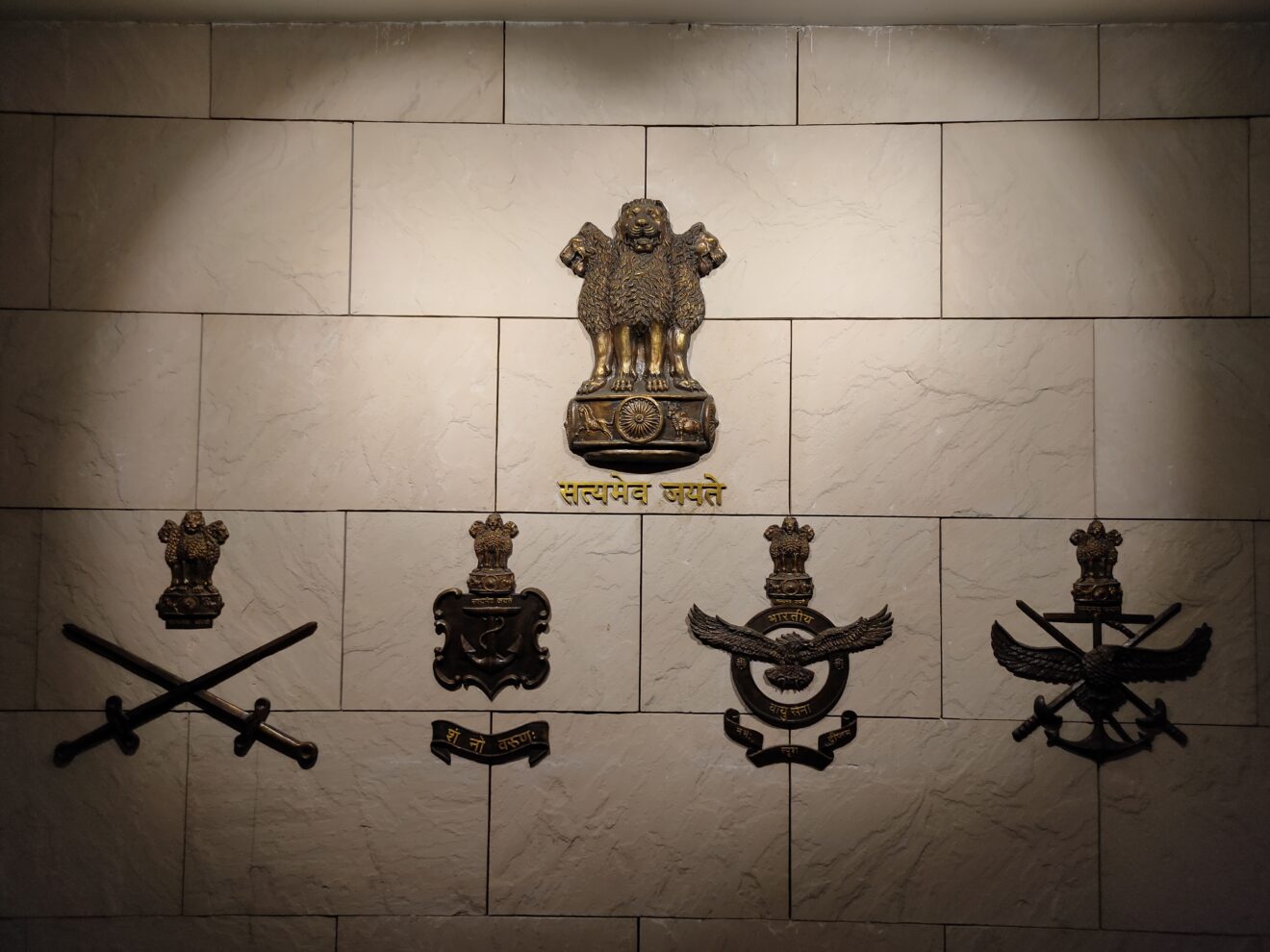BY DEFENCE JOURNALIST SAHIL | T.I.N. NETWORK
U.S. and India Deepen Strategic Military Partnership: The 22nd Military Cooperation Group Marks a Decade of Evolving Defence Synergy
Honolulu, Hawaii | November 2025:
In a defining moment for the Indo-Pacific’s security architecture, the United States and India reaffirmed their long-term strategic and defence cooperation during the 22nd Military Cooperation Group (MCG) meeting, held at the U.S. Indo-Pacific Command (USINDOPACOM) Headquarters in Honolulu from November 3–4, 2025.
The high-level dialogue, co-chaired by Lt. Gen. Joshua M. Rudd, Deputy Commander of USINDOPACOM, and Air Marshal Ashutosh Dixit, Chief of Integrated Defence Staff to the Chairman, Chiefs of Staff Committee (CISC), underscored the expanding depth of the U.S.–India defence partnership — a relationship that has evolved from a transactional framework to one defined by trust, technology, and shared responsibility for Indo-Pacific stability.
A Milestone in Bilateral Defence Cooperation
The MCG meeting was held under the aegis of the U.S.–India Defense Framework Agreement, a decade-long roadmap that serves as the cornerstone of their Major Defense Partnership (MDP). The framework was most recently renewed by U.S. Secretary of War Pete Hegseth and India’s Defence Minister Rajnath Singh during the ASEAN Defence Ministers’ Meeting-Plus (ADMM-Plus) in Kuala Lumpur on October 31, 2025 — reaffirming both nations’ resolve to align defence cooperation with 21st-century security needs.
The agenda of the MCG spanned an array of critical domains — from logistics cooperation and technology co-production to enhancing joint operational readiness and regional threat response coordination.
Both sides reiterated their commitment to advancing joint military capability, interoperability, and innovation-driven collaboration, reflecting a mutual understanding that a stable Indo-Pacific requires credible partnerships capable of addressing conventional and emerging threats alike.
Strategic Themes and Technological Frontiers
At the heart of the discussion were four broad strategic themes:
- Operational Interoperability – Enhancing coordination between U.S. and Indian forces through joint exercises, integrated command-level exchanges, and information-sharing mechanisms.
- Defence Logistics and Sustainment – Expanding access to logistics hubs, fuel supplies, and repair facilities under the Logistics Exchange Memorandum of Agreement (LEMOA), enabling forward-deployed readiness across maritime and aerial domains.
- Technology and Co-Production – Building upon the India-U.S. Initiative on Critical and Emerging Technologies (iCET), with a focus on co-development of next-generation systems, including AI-driven C4ISR, electronic warfare systems, quantum communication, and hypersonic technologies.
- Regional Security Coordination – Strengthening trilateral and quadrilateral frameworks involving partners like Japan and Australia under the Quad initiative, to maintain freedom of navigation, transparency, and rule of law in the Indo-Pacific region.
Personnel representing not only USINDOPACOM but also U.S. Africa Command, U.S. Central Command, and U.S. Space Command joined the discussions — signalling a comprehensive American approach to integrating India’s growing global role across multiple geographic theatres and operational domains.
Shared Vision: A Free, Open, and Secure Indo-Pacific
The U.S.–India strategic relationship has matured over the past two decades from symbolic cooperation into operational coordination. What began as a dialogue on maritime safety has expanded into full-spectrum engagement — including joint exercises like MALABAR, YUDH ABHYAS, and COPE INDIA, as well as increased intelligence-sharing under the BECA (Basic Exchange and Cooperation Agreement).
At the MCG, both delegations reaffirmed that the partnership’s central tenets are rooted in shared democratic values and a mutual commitment to regional peace, prosperity, and sovereignty.
Speaking during the session, Lt. Gen. Rudd emphasized that the U.S. views India as a “lynchpin partner” in maintaining a free and open Indo-Pacific.
“Our cooperation extends far beyond military exercises. It is about ensuring a regional order that values sovereignty, transparency, and the rule of law. Together, the U.S. and India form the bedrock of regional security and strategic stability,” he said.
Air Marshal Dixit, representing India’s tri-services leadership, echoed the sentiment:
“India’s defence partnership with the U.S. is not just about platforms and protocols — it is about people, trust, and shared vision. We are working toward joint readiness, joint innovation, and joint deterrence against any threat that challenges regional peace.”
Indo-Pacific Challenges and Cooperative Security
The dialogue also reviewed ongoing regional flashpoints — including tensions in the South China Sea, maritime coercion in the East China Sea, and instability across the Indian Ocean Region (IOR).
Both sides acknowledged that China’s assertive posturing, combined with grey-zone tactics and hybrid warfare strategies, poses a multi-domain challenge that requires collaborative deterrence.
The MCG noted that information warfare, cybersecurity, and space domain coordination have now become indispensable components of 21st-century defence cooperation.
Accordingly, the next phase of the U.S.–India defence partnership will involve establishing joint working groups for space situational awareness, AI-based threat prediction, and combined maritime domain awareness (MDA) to preemptively detect hostile movements across maritime corridors.
Expanding Horizons: Training, Innovation, and Industry Linkages
In line with the Defence Framework, both sides expressed intent to enhance personnel exchanges, particularly between the National Defence College (NDC), India and National Defense University (NDU), USA, to deepen strategic culture alignment.
Additionally, the MCG proposed the establishment of a U.S.–India Defence Innovation Corridor, enabling collaboration between Indian start-ups under the Innovations for Defence Excellence (iDEX) initiative and American defence manufacturers.
Industry integration under the Defence Technology and Trade Initiative (DTTI) was also highlighted as a mechanism to accelerate co-development of unmanned aerial platforms, directed energy systems, and advanced engine technology — promoting Atmanirbhar Bharat (self-reliant India) while strengthening U.S.–India industrial synergy.
Strengthening Intelligence and Maritime Cooperation
A key outcome of the meeting was an agreement to expand intelligence and information-sharing frameworks under BECA and COMCASA, focusing on real-time maritime surveillance and cyber threat intelligence.
With piracy, smuggling, and illicit maritime activities persisting in the western Indian Ocean and Bay of Bengal, the two countries agreed on expanding coordinated patrols (CORPATs) and satellite-aided monitoring to protect sea lines of communication (SLOCs).
Moreover, the partnership aims to integrate space-based surveillance data to support joint operations and humanitarian assistance missions, enhancing preparedness for both natural disasters and military contingencies.
The Next Decade: From Framework to Force Multiplier
The renewal of the 10-year U.S.–India Defence Framework marks a decisive step toward transforming the bilateral relationship from a cooperative partnership into a force-multiplying alliance.
For India, it symbolizes greater access to advanced technology, global logistics, and real-time strategic intelligence. For the U.S., it ensures a capable, trusted regional partner that anchors democratic stability across one of the world’s most contested regions.
Both sides are expected to convene follow-up discussions under the Defence Policy Group (DPG) and Joint Working Groups (JWGs) to operationalize the outcomes of the 22nd MCG in the coming months.
Conclusion: Partners in Purpose, Guardians of Peace
As the Indo-Pacific grows increasingly dynamic, the 22nd Military Cooperation Group meeting reaffirmed that India and the United States are partners not just by convenience, but by conviction.
Both nations stand united in their belief that security and prosperity must go hand in hand, and that cooperation — not confrontation — remains the cornerstone of enduring peace.
USINDOPACOM reiterated its unwavering commitment to promote regional stability, respond to contingencies, and deter aggression, with India emerging as its most vital and steadfast partner in the region.
From the Indian perspective, the MCG represented yet another assertion that New Delhi’s foreign policy is guided by strategic autonomy but strengthened by strategic partnerships — a balance that defines India’s growing global influence.
In essence, the 22nd MCG in Honolulu was not just a meeting — it was a message:
That in an era of shifting power equations, India and the U.S. will navigate the Indo-Pacific together — defending democracy, ensuring stability, and shaping the future of freedom on the world’s most vital frontier.
BY DEFENCE JOURNALIST SAHIL | T.I.N. NETWORK
अमेरिका और भारत ने इंडो-पैसिफिक में रक्षा साझेदारी को नई दिशा दी — 22वीं मिलिट्री कोऑपरेशन ग्रुप मीटिंग से मजबूत हुआ रणनीतिक सहयोग
होनोलूलू, हवाई | नवम्बर 2025:
इंडो-पैसिफिक क्षेत्र की सुरक्षा व्यवस्था में एक ऐतिहासिक क्षण दर्ज करते हुए, भारत और अमेरिका ने अपनी दीर्घकालिक रक्षा एवं रणनीतिक साझेदारी को एक नए स्तर पर पहुंचाया। यह अवसर था 22वीं मिलिट्री कोऑपरेशन ग्रुप (MCG) की बैठक का, जो यू.एस. इंडो-पैसिफिक कमांड (USINDOPACOM) मुख्यालय, होनोलूलू में 3–4 नवम्बर 2025 के दौरान आयोजित हुई।
इस उच्च-स्तरीय वार्ता की सह-अध्यक्षता लेफ्टिनेंट जनरल जोशुआ एम. रड, डिप्टी कमांडर, यूएस इंडो-पैसिफिक कमांड, और एयर मार्शल अशुतोष दीक्षित, चीफ ऑफ इंटीग्रेटेड डिफेंस स्टाफ टू द चेयरमैन, चीफ्स ऑफ स्टाफ कमेटी (CISC) ने की। यह बैठक भारत-अमेरिका रक्षा साझेदारी के उस गहरे विश्वास, तकनीकी सहयोग और साझा दायित्व का प्रतीक बनी जो अब केवल समझौतों से आगे बढ़कर रणनीतिक भरोसे की पहचान बन चुकी है।
द्विपक्षीय रक्षा सहयोग का नया अध्याय
22वीं MCG बैठक भारत-अमेरिका डिफेंस फ्रेमवर्क एग्रीमेंट के तहत आयोजित की गई — यह एक दस वर्षीय रणनीतिक रोडमैप है जो दोनों देशों की मेजर डिफेंस पार्टनरशिप (MDP) का आधार स्तंभ है। इस समझौते को हाल ही में अमेरिकी युद्ध सचिव पीट हेकसेथ और भारत के रक्षा मंत्री राजनाथ सिंह ने आसियान रक्षा मंत्रियों की बैठक-प्लस (ADMM-Plus) के दौरान कुआलालंपुर (मलेशिया) में 31 अक्टूबर 2025 को पुनः नवीनीकृत किया।
इस नवीनीकरण ने दोनों राष्ट्रों की इस प्रतिबद्धता को दोहराया कि वे 21वीं सदी की रक्षा आवश्यकताओं को ध्यान में रखते हुए सहयोग को और गहरा करेंगे।
MCG की बैठक में कई महत्वपूर्ण विषयों पर विस्तार से चर्चा की गई — लॉजिस्टिक सहयोग, टेक्नोलॉजी को-प्रोडक्शन, संयुक्त संचालन क्षमता में वृद्धि, और क्षेत्रीय सुरक्षा प्रतिक्रिया तंत्र को सुदृढ़ करने जैसे मुद्दे प्रमुख रहे।
दोनों देशों ने इस बात पर सहमति जताई कि एक स्थिर और सुरक्षित इंडो-पैसिफिक क्षेत्र के लिए तकनीकी नवाचार, साझा प्रशिक्षण और विश्वसनीय साझेदारी आवश्यक हैं।
रणनीतिक विषय और नई तकनीकी सीमाएँ
बैठक के दौरान चार प्रमुख रणनीतिक विषयों पर फोकस किया गया —
1. ऑपरेशनल इंटरऑपरेबिलिटी:
भारतीय और अमेरिकी सेनाओं के बीच बेहतर तालमेल, संयुक्त अभ्यासों, कमांड स्तर के एक्सचेंज और सूचना साझा करने की प्रणाली को और सशक्त बनाना।
2. रक्षा लॉजिस्टिक्स और सस्टेनमेंट:
लॉजिस्टिक्स एक्सचेंज मेमोरेंडम ऑफ एग्रीमेंट (LEMOA) के तहत ईंधन, मरम्मत केंद्रों और नौसैनिक-अभियानों के समर्थन तंत्र का विस्तार, जिससे दोनों सेनाओं की तत्परता और दूरदराज़ संचालन क्षमता बढ़ सके।
3. प्रौद्योगिकी और सह-उत्पादन:
भारत-अमेरिका iCET (इंडिया–यूएस इनिशिएटिव ऑन क्रिटिकल एंड एमर्जिंग टेक्नोलॉजीज) को मजबूत बनाते हुए, कृत्रिम बुद्धिमत्ता आधारित C4ISR सिस्टम, इलेक्ट्रॉनिक वॉरफेयर, क्वांटम कम्युनिकेशन और हाइपरसोनिक टेक्नोलॉजी के संयुक्त विकास को प्राथमिकता देना।
4. क्षेत्रीय सुरक्षा सहयोग:
क्वाड (भारत, अमेरिका, जापान और ऑस्ट्रेलिया) जैसे बहुपक्षीय मंचों के माध्यम से इंडो-पैसिफिक में नौवहन की स्वतंत्रता, पारदर्शिता और अंतरराष्ट्रीय कानूनों के अनुपालन को बढ़ावा देना।
बैठक में केवल USINDOPACOM ही नहीं, बल्कि यू.एस. अफ्रीका कमांड, सेंट्रल कमांड और स्पेस कमांड के प्रतिनिधियों ने भी हिस्सा लिया — यह इस बात का संकेत था कि अमेरिका भारत की भूमिका को केवल क्षेत्रीय नहीं, बल्कि वैश्विक रणनीतिक दृष्टिकोण से देखता है।
साझा दृष्टि — स्वतंत्र, खुला और सुरक्षित इंडो-पैसिफिक
पिछले दो दशकों में भारत-अमेरिका रक्षा सहयोग प्रतीकात्मक संबंधों से आगे बढ़कर एक संचालनात्मक साझेदारी में तब्दील हो चुका है।
जो संबंध कभी समुद्री सुरक्षा संवाद तक सीमित थे, आज वे मालाबार, युद्ध अभ्यास, कोप इंडिया जैसे संयुक्त अभियानों और BECA (बेसिक एक्सचेंज एंड कोऑपरेशन एग्रीमेंट) जैसी वास्तविक सूचना साझेदारी तक पहुँच चुके हैं।
बैठक में दोनों पक्षों ने पुनः इस बात की पुष्टि की कि उनका सहयोग लोकतांत्रिक मूल्यों, पारदर्शिता और क्षेत्रीय स्थिरता पर आधारित है।
लेफ्टिनेंट जनरल रड ने कहा —
“हमारा सहयोग केवल सैन्य अभ्यासों तक सीमित नहीं है। यह एक ऐसे क्षेत्रीय ढाँचे की सुरक्षा के लिए है जो पारदर्शिता, संप्रभुता और कानून के शासन को महत्व देता है। भारत और अमेरिका मिलकर इंडो-पैसिफिक की स्थिरता की रीढ़ हैं।”
एयर मार्शल अशुतोष दीक्षित ने भी समान भावना प्रकट की —
“अमेरिका के साथ भारत का रक्षा सहयोग केवल समझौतों या प्रणालियों तक सीमित नहीं, बल्कि यह विश्वास और साझा दृष्टिकोण पर आधारित साझेदारी है। हमारा लक्ष्य संयुक्त तैयारी, संयुक्त नवाचार और संयुक्त प्रतिरोध है — किसी भी चुनौती के विरुद्ध।”
इंडो-पैसिफिक की चुनौतियाँ और सहयोगी सुरक्षा दृष्टिकोण
बैठक में क्षेत्रीय तनाव बिंदुओं पर भी विस्तार से चर्चा हुई — जैसे दक्षिण चीन सागर में बढ़ता सैन्य दबाव, पूर्वी चीन सागर में जबरदस्ती की रणनीतियाँ, और हिंद महासागर क्षेत्र (IOR) में अस्थिरता।
दोनों पक्षों ने माना कि चीन की आक्रामक नीति, ग्रे-ज़ोन रणनीतियाँ और हाइब्रिड युद्ध की तकनीकें इस क्षेत्र की स्थिरता के लिए बड़ी चुनौती हैं, जिनका सामना केवल साझा और पूर्व-नियोजित प्रतिरोध तंत्र से किया जा सकता है।
बैठक में यह भी तय हुआ कि सूचना युद्ध, साइबर सुरक्षा और अंतरिक्ष क्षेत्र में समन्वय अब रक्षा सहयोग का अभिन्न हिस्सा बन चुके हैं।
इसके तहत आने वाले महीनों में दोनों देश स्पेस सिचुएशनल अवेयरनेस, AI आधारित खतरा पूर्वानुमान, और संयुक्त मैरीटाइम डोमेन अवेयरनेस (MDA) के लिए वर्किंग ग्रुप स्थापित करेंगे।
नवाचार, प्रशिक्षण और उद्योगिक सहयोग की दिशा में विस्तार
रक्षा ढाँचे के अनुरूप, दोनों देशों ने नेशनल डिफेंस कॉलेज (NDC) भारत और नेशनल डिफेंस यूनिवर्सिटी (NDU) अमेरिका के बीच रणनीतिक प्रशिक्षण आदान-प्रदान को बढ़ाने पर सहमति जताई।
इसके अतिरिक्त, एक भारत-अमेरिका डिफेंस इनोवेशन कॉरिडोर की स्थापना का प्रस्ताव रखा गया, जिससे इनोवेशन्स फॉर डिफेंस एक्सीलेंस (iDEX) के तहत भारतीय स्टार्टअप्स अमेरिकी रक्षा उद्योगों के साथ साझेदारी कर सकें।
साथ ही डिफेंस टेक्नोलॉजी एंड ट्रेड इनिशिएटिव (DTTI) के अंतर्गत संयुक्त रूप से मानवरहित हवाई प्लेटफॉर्म, डायरेक्टेड एनर्जी सिस्टम्स, और एडवांस इंजन टेक्नोलॉजी विकसित करने पर बल दिया गया — जो आत्मनिर्भर भारत और भारत-अमेरिका औद्योगिक तालमेल दोनों को मजबूत करेगा।
सूचना एवं समुद्री सहयोग की नई दिशा
बैठक का एक महत्वपूर्ण परिणाम यह रहा कि दोनों देशों ने BECA और COMCASA के तहत रियल-टाइम मैरीटाइम सर्विलांस और साइबर थ्रेट इंटेलिजेंस साझा करने की व्यवस्था को और विस्तृत करने पर सहमति जताई।
हिंद महासागर और बंगाल की खाड़ी में लगातार सक्रिय पायरेसी, तस्करी और अवैध समुद्री गतिविधियों पर रोक के लिए संयुक्त गश्त (CORPATs) और सैटेलाइट निगरानी बढ़ाने का निर्णय लिया गया।
साथ ही, भविष्य में दोनों देशों के बीच अंतरिक्ष आधारित निगरानी और मानवीय सहायता मिशनों में समन्वय को और सुदृढ़ किया जाएगा।
अगला दशक: सहयोग से सामर्थ्य की दिशा में
दस वर्षीय रक्षा ढाँचे का नवीनीकरण भारत-अमेरिका संबंधों को सहयोगात्मक भागीदारी से आगे बढ़ाकर रणनीतिक बलगुणक साझेदारी (Force Multiplier Alliance) की दिशा में ले जाता है।
भारत के लिए यह उन्नत तकनीक, वैश्विक लॉजिस्टिक्स नेटवर्क और रियल-टाइम खुफिया क्षमता तक अधिक पहुँच का प्रतीक है।
वहीं अमेरिका के लिए यह एक विश्वसनीय और सक्षम लोकतांत्रिक साझेदार का आश्वासन है जो इंडो-पैसिफिक में स्थिरता का स्तंभ बनता जा रहा है।
निष्कर्ष: उद्देश्य में साझेदार, शांति के संरक्षक
तेजी से बदलते वैश्विक समीकरणों के बीच 22वीं मिलिट्री कोऑपरेशन ग्रुप बैठक ने यह सिद्ध कर दिया कि भारत और अमेरिका केवल सुविधा के साझेदार नहीं, बल्कि विश्वास के साझेदार हैं।
दोनों देशों ने यह स्पष्ट संदेश दिया कि सुरक्षा और समृद्धि एक-दूसरे के पूरक हैं, और सहयोग ही स्थायी शांति की आधारशिला है।
USINDOPACOM ने पुनः यह दोहराया कि वह इंडो-पैसिफिक की स्थिरता, सुरक्षा और आक्रमण की रोकथाम के लिए पूरी तरह प्रतिबद्ध है — और इस मिशन में भारत उसकी सबसे सशक्त कड़ी है।
भारतीय दृष्टिकोण से यह बैठक इस बात का प्रमाण थी कि भारत की विदेश नीति “रणनीतिक स्वायत्तता” पर आधारित है, परन्तु इसे सुदृढ़ बनाते हैं “रणनीतिक साझेदारी” के रिश्ते।
अंततः, होनोलूलू में आयोजित यह बैठक केवल एक संवाद नहीं, बल्कि एक संदेश थी —
“बदलते वैश्विक समीकरणों के इस दौर में, भारत और अमेरिका इंडो-पैसिफिक की गहराइयों को साथ मिलकर पार करेंगे — लोकतंत्र की रक्षा के लिए, स्थिरता के लिए, और स्वतंत्रता के भविष्य के लिए।”














Add Comment